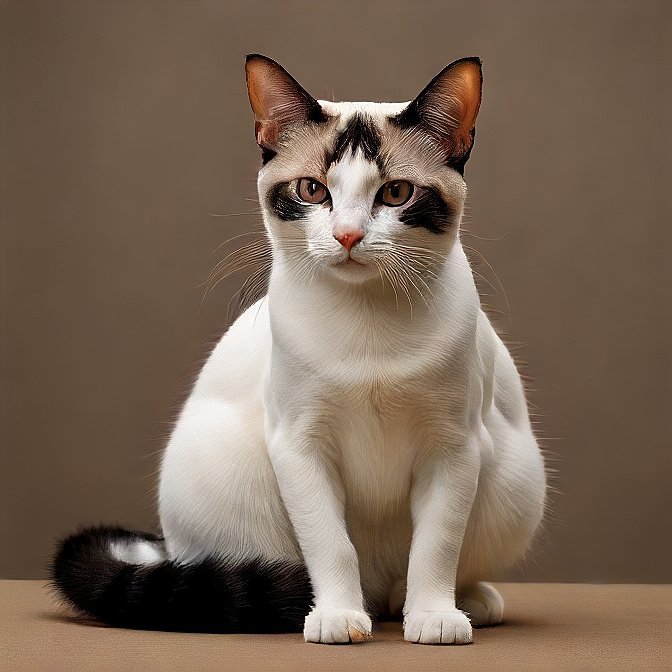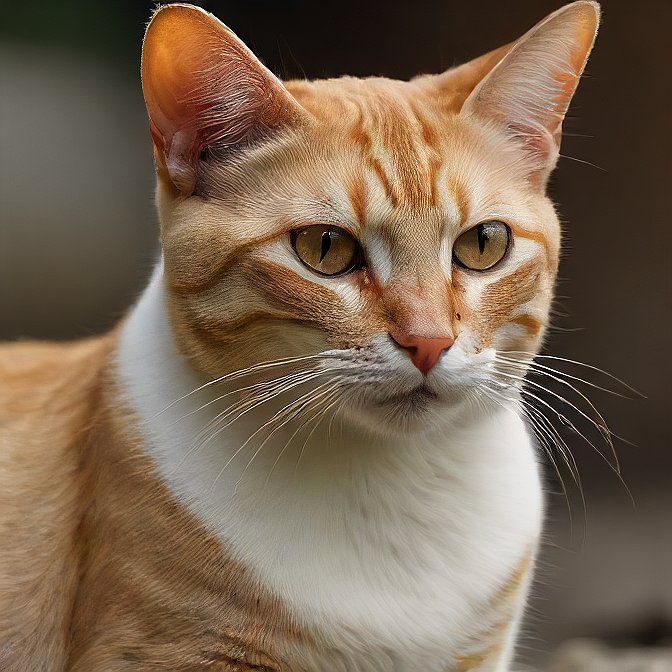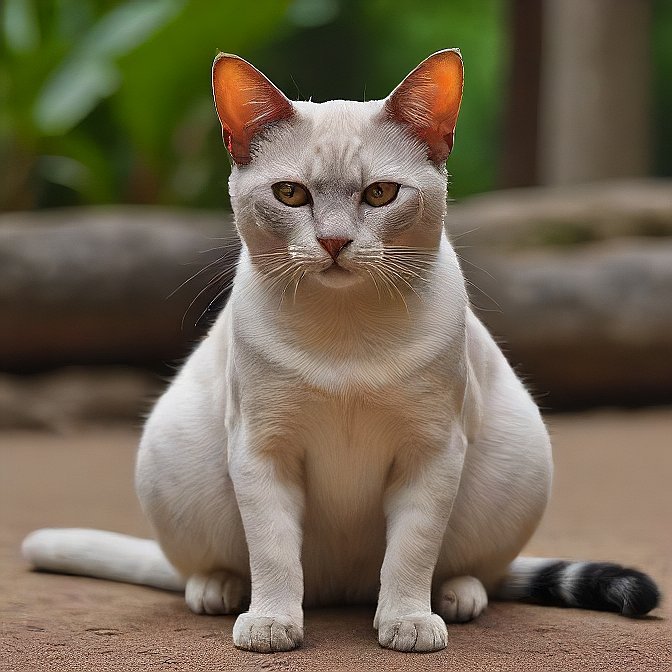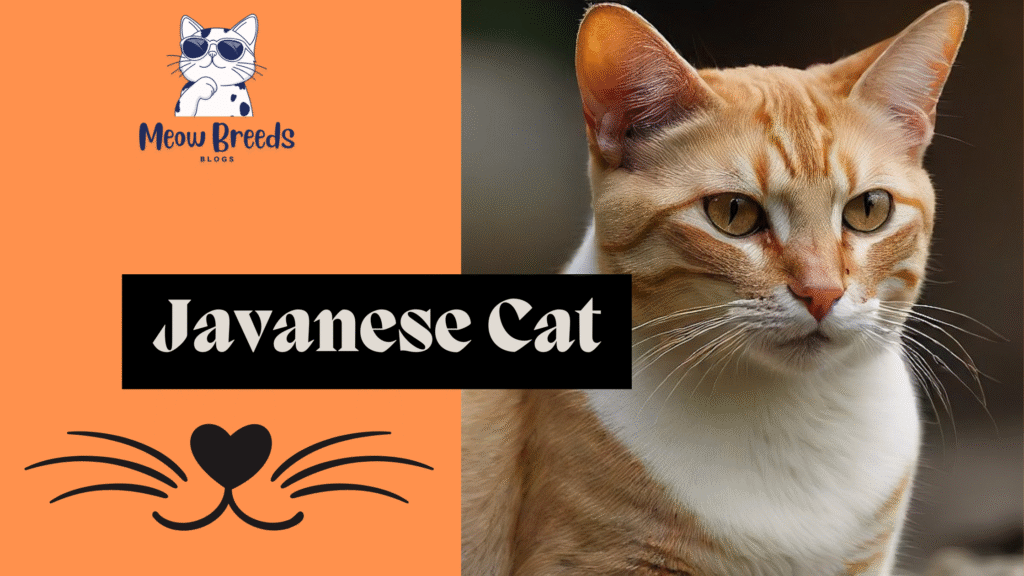Table of Contents
Introduction
The Javanese cat breed is gentle, loving, and smart, as well as a fusion between the elegant looks of the Siamese cat and the plush fur of the longhaired cat. Its beautiful appearance, vocal character, and extreme need for companionship, the Javanese has won all the hearts of cat lovers who seek both the beauty and intelligence on the feline front.

Do you want to know more about the breed, or are you planning to adopt one for your family? This article will take you through all the processes you need to know about the Javanese cat, such as personality and grooming habits, and the compatibility of their lifestyle with yours.
What Is a Javanese Cat?
Javanese is a long-haired cat breed of Oriental type, which is very closely related to the Siamese, Balinese, and Oriental Longhair. The Javanese cat is not native to the island of Java, in Indonesia, as the name implies. It was finalized by actually creating it in North America and naming it because of how exotic it was, a naming trend that used the geography of Southeast Asia to name similar breeds.
Known to be expressive in their personality, silky in their coats, and having attractive features, Javanese are highly interactive, committed, and smart.
History and Origin of the Javanese
A North American Creation
American cat breeders of the 1970s crossbred:
- Balinese (long-haired Siamese)
- Colorpoint Shorthair (a Siamese mix with additional color patterns)
- Oriental cats (known for a wide range of coat colors and patterns)
The desire was to come up with a cat of the Siamese type of elegance, with a longer and silky coat, and with a variety of colors other than the common Siamese point colors.
Recognition and Classification
- The Javanese was singled out as a breed by the CFA (Cat Fanciers Association) in 1986.
- Within the last number of years, the CFA has absorbed the Javanese under the same breed groupings as the Balinese, and it also believes that these two are of the same family.
- Different cat associations that may categorize them differently according to the local standards include TICA (The International Cat Association).
Even though the classification arguments have arisen, there is standardness in the characterisations of the Javanese.
Physical Characteristics
The Japanese cats are oriental in appearance and have a thin yet fit-bodied structure. They make it gracefully, and they have some sort of an aristocratic look.
Body Structure
- Size: Medium
- Weight: 5–10 pounds, with males typically heavier than females
- Body Shape: Long, svelte, and tubular with fine bones
- Legs: Long and slender, with small oval paws
- Tail: Long and plume-like, covered with a flowing coat
Head and Face
- Head Shape: Wedge-shaped with a straight profile
- Eyes: Almond-shaped and brilliant blue
- Ears: Large, pointed, and set wide apart, contributing to the breed’s exotic look
Coat and Colors
- Coat Type: Mockingbirds have medium-length fine, and silky fur that is close to the body with no undercoat (which helps make them less challenging to groom)
- Color Points: Javanese cats possess color points on the muscular tail, legs, and the face, just like the Siamese and Balinese cats, and the ears also become color pointed
- Expanded Color Range: Not all of the colors offered by Siamese are available to them, though they can be found in color variety, including:
- Red Point
- Cream Point
- Tortie Point
- Lynx Point
- Chocolate, Blue, Lilac, and Seal Points
One of their distinctive features, which makes them different from the traditional Balinese or Siamese cats, is their wide coloring.
Check Out: Japanese Bobtail – Breed#18.
Personality and Temperament
The Javanese is not just a handsome face; it has to be a cat that is full of personality and charm. It is extremely people-oriented and emotionally intelligent.
Highly Vocal and Expressive
- They are vocal, and they enjoy conversing with their owners.
- They employ various forms of vocalizations to show the state of mind, requirements, or mere curiosity.
- They sing less loudly than a Siamese, but yet with frequency and distinctness.
Extremely Intelligent
- The Javanese will learn fast and will like interactive toys, the puzzle feeder, and even learn tricks.
- It is common to hear many of the owners talking of their Javanese cats opening the doors, fetching, or adding some responses to commands.
Loyal and Affectionate
- This breed tends to establish close relationships with its humans and tends to follow them around the house.
- They hate to be left to their own devices and prefer to be engaged in activities on a daily basis the most.
Energetic and Playful
- Javanese cats are kittenish long after their adulthood.
- They love the playtime, movement, climbing, exploration, and interactive games.
Grooming and Care

Although long-haired Javanese wear an elegant long coat, they are comparatively low-maintenance cats in terms of grooming.
Grooming Requirements
- Brushing: A regular brushing of the coat once or twice a week should be sufficient to keep the coat sleek and get rid of the loose hairs.
- Bathing: Not frequently required except when the cat comes into a mess.
- Shedding: The little one is shedding because there is no dense undercoat.
Nail and Dental Care
- A two-week interval of trimming nails regularly
- Brushing of teeth once a week or every two weeks using toothpaste that has been approved by a vet to avoid dental diseases
Diet and Nutrition
Javanese cats are energetic and are very metabolically active. A protein diet helps in maintaining their body’s energy and muscle tone.
Feeding Tips
- Quality Food: Select commercial cat food without grain that is high-protein or balanced raw diets outside the vet, that is approved.
- Feeding Schedule: Adults- Twice a day; Kittens- three times.
- Hydration: Water should be provided, and hydration should be present.
Health and Lifespan
Such as other purebred cats, the Javanese has its share of health issues that the breed might be prone to. In general, though, it is a long-lived, healthy breed.
Common Health Concerns
- Dental Issues: Subject to gingivitis, assuming that a healthy dental regimen is not adopted
- Respiratory Sensitivities: It is rarely observed by reason of their delicately contoured face structure
- Hereditary Conditions: e.g., progressive retinal atrophy (PRA) or liver amyloidosis, which are rare in lines that have been well bred
Lifespan
- Javanese cats have a lifespan of 14-18 years and can live even longer when well taken care of, with up to 20 years.
Ideal Living Environment
Javanese cats are happy when treated in an environment where they get attention, stimulation, and love.
Family Compatibility
- Good companion with children, particularly with children who love to play with simulating and loving animals.
- They get along with other pets, such as cats and so-called cat-friendly dogs, when properly introduced to them.
Home Setup
- Satisfy their needs by giving them cat trees, climbing shelves, and toys.
- Javanese cats are better kept indoors because of their safety and the well-being of their coat.
Javanese vs. Related Breeds
Javanese vs. Balinese
- Balinese: Traditionally, colors are of traditional Siamese point (seal, chocolate, blue, lilac) color.
- Javanese: Has a broader colour range, including red, cream, tortie, and lynx points.
Javanese vs. Oriental Longhair
- Oriental Longhairs can be green-eyed, solid-bodied, and patterned.
- Javanese are like Siamese in being blue-eyed and pointed colored.
Finding and Adopting a Javanese Cat

In case you are interested in the adoption of the Javanese, there are a couple of options to consider:
Reputable Breeders
- Select those breeders who test against genetic and other diseases and raise young kittens at home.
- Request a meeting with the parents of the kitten and check health guarantees.
Rescue and Adoption
- Javanese cats or mixes may come across in purebred rescue groups.
- Other cats like that may also be found at local shelters, particularly in case you are not against adopting older cats.
Conclusion
The Javanese cat is a very beautiful, elegant breed of cat and is a highly intelligent one as well, and it will be a very loyal and engaging pet. The Javanese has a great look, wonderful personality, and needs little management, hence a perfect balance of style and character. You want to cuddle a cat, talk to her, and play a game of fetch with her, the Javanese will not fail you.
They are most appropriate for families, individuals, or elderly people who seek a loving and playful pet. These cats will be happy and add to any household as long as they remain a part and parcel of your life.
For more info: Click Here.
FAQs
1. Is the Javanese cat pooling in a hypoallergenic gene pool?
No cat can be completely hypoallergenic, but the Javanese cats are known to possess fewer allergens due to their lower amount of Fel d 1 protein, which is a trigger for an individual. Understandably, this breed causes few experiences with allergy to most sufferers, though people differ.
2. What is the Javanese cat’s attention requirement?
Javanese cats are sociable and love humans. They also do not fare well when left alone for a long time. In case you have to leave frequently, you can get another pet or arrange to see him frequently.
3. Can Javanese cats be well-trained?
Yes! They are very smart and desire to be loved. A Javanese cat is trainable through patience and treats to perform tricks, utilize puzzle feeders, and even walk on a collar.



